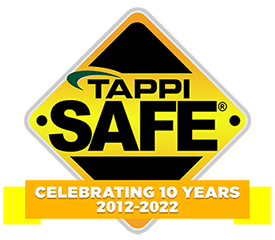 Search
Search
Use the search bar or filters below to find any TAPPI product or publication.
Filters
Content Type
Publications
Level of Knowledge
Collections
Journal articles

Magazine articles

Measurement and control of extensional viscosity in barrier coating dispersions, TAPPI Journal November 2023
ABSTRACT: This study aimed to understand the effect of various rheological additives on the extensional viscosity of barrier coating dispersions, as well as to understand the role extensional viscosity plays in stabilizing a liquid curtain. The apparent extensional viscosity was measured using two devices that create accelerating flows: a capillary viscometer and an orifice rheometer. Additives tested include several polyvinyl alcohols, a high molecular weight polyethylene oxide, and carboxymethylcellulose. Extensional viscosity plays a significant role in stabilizing a liquid curtain, as it slows down hole expansion and prevents impurities and disturbances from causing holes in the first place. Some of the additives could substantially increase the extensional viscosity of the dispersions without increasing the shear viscosity outside the typical range of processability for a curtain coater. Some of the additives exhibited coil-stretch transition, meaning they start increasing extensional viscosity above a certain extension rate. Polymers with low chain lengths exhibited finite extensibility, which indicates the polymer chain has fully extended and cannot provide further extensional viscosity, even though the extending force is increased. Polymeric additives with stiff or branched chains significantly raised shear viscosity without increasing extensional viscosity. Both methods could reliably measure extensional viscosity in curtain coating barrier dispersions.
Journal articles

Magazine articles

Improving paper wet strength via increased lignin content and hot-pressing temperature, TAPPI JOURNAL October 2020
ABSTRACT: It is known that the strength properties of wood-based paper materials can be enhanced via hot-pressing techniques. Today, there is a desire not only for a change from fossil-based packaging materials to new sustainable bio-based materials, but also for more effective and eco-friendly solutions for improving the dry and wet strength of paper and board. Against this background, hot pressing of paper made from high yield pulp (HYP), rich in lignin, becomes highly interesting. This study investigated the influence of pressing temperature and native lignin content on the properties of paper produced by means of hot pressing. Kraft pulps of varied lignin content (kappa numbers: 25, 50, 80) were produced at pilot scale from the same batch by varying the cooking time. We then studied the effect of lignin content by evaluating the physical properties of Rapid Köthen sheets after hot pressing in the temperature range of 20°C•200°C with a constant nip pressure of 7 MPa. The pilot-scale cooked pulps were compared with reference samples of mill-produced northern bleached soft-wood kraft (NBSK) pulp and mill-produced chemithermomechanical pulp (CTMP).Generally, the results demonstrated that lignin content had a significant effect on both dry and wet tensile index. All of the pilot cooked pulps with increased lignin content had a higher tensile index than the reference NBSK pulp. To obtain high tensile index, both dry and wet, the pressing temperature should be set high, preferably at least 200°C; that is, well above the glass transition temperature (Tg) for lignin. Moreover, the lignin content should prefera-bly also be high. All kraft pulps investigated in this study showed a linear relationship between wet strength and lignin content.
Journal articles

Magazine articles

Viscoelastic web curl due to storage in wound rolls, TAPPI Journal July 2020
ABSTRACT: Winding is often the final operation in a roll-to-roll manufacturing process. Web materials, i.e., materials that are thin compared to their length, are wound into rolls because this form is the only practical means to store them. The resulting bending strains and associated stresses are large for thick webs and laminates. As many webs are viscoelastic on some time scale, bending stresses lead to creep and inhomogeneous changes in length. When the web material is unwound and cut into discrete samples, a residual curvature remains. This curvature, called curl, is the inability for the web to lie flat at no tension. Curl is an undesirable web defect that causes loss of productivity in a subsequent web process. This paper describes the development and implementation of modeling and experimental tools to explore and mitigate curl in homogenous webs. Two theoretical and numerical methods that allow the prediction of curl in a web are developed: a winding software based on bending recovery theory, and the implementation of dynamic simula-tions of winding. One experimental method is developed that directly measures the curl online by taking advantage of the anticlastic bending resulting from the curl. These methods are demonstrated for a low-density polyethylene web.
Journal articles

Magazine articles

Equilibrium moisture content in wet pressing of paper, TAPPI Journal July 2020
ABSTRACT: Equilibrium moisture is a limiting factor in achieving high solids in the later stages of pressing or pressing low basis weight grades. We have developed a model that relates equilibrium moisture directly to the pore size distribution of fibers as measured by the solute exclusion technique. The model shows that chemical pulping and refining increase equilibrium moisture by increasing pore volume at given pore sizes in fibers, which leads to lower pressed solids and greater energy expenditure in the dryer section. Means to increase equilibrium moisture without compromising pulp strength are briefly discussed.
Magazine articles

Pitfalls of trading market pulp on the internet, TAPPI JOURNAL, November 2000, Vol. 83(11)
Pitfalls of trading market pulp on the internet, TAPPI JOURNAL, November 2000, Vol. 83(11)
Magazine articles

Mount st. helens - 20 years of recovery, TAPPI JOURNAL, May 2000, Vol. 83(5)
Mount st. helens - 20 years of recovery, TAPPI JOURNAL, May 2000, Vol. 83(5)
Magazine articles

Improving dryer performance, TAPPI JOURNAL, May 2000, Vol. 83(5)
Improving dryer performance, TAPPI JOURNAL, May 2000, Vol. 83(5)
Magazine articles

Imagine more in coatings, TAPPI JOURNAL, May 2000, Vol. 83(5)
Imagine more in coatings, TAPPI JOURNAL, May 2000, Vol. 83(5)
Magazine articles

On management: effective scheduling: a key management tool, TAPPI JOURNAL, April 1998, Vol. 81(4)
On management: effective scheduling: a key management tool, TAPPI JOURNAL, April 1998, Vol. 81(4)
Journal articles

Magazine articles

The Creep Properties of Paper, TAPPI Journal August 2022
ABSTRACT: The creep proprties of alpha-pup handshetts were determined at various constant tensile loads and relative humidities for the purpose of clarifying the prerupture mechanical behavior of paper.






